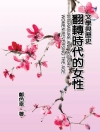The Third Republic, known as the ‘belle époque’, was a period of lively, articulate and surprisingly radical feminist activity in France, borne out of the contradiction between the Republican ideals of liberty, equality and fraternity and the reality of intense and systematic gender discrimination. Yet, it also was a period of intense and varied artistic production, with women disproving the critical nearconsensus that art was a masculine activity by writing, painting, performing, sculpting, and even displaying an interest in the new ‘seventh art’ of cinema. This book explores all these facets of the period, weaving them into a complex, multi-stranded argument about the importance of this rich period of French women’s history.
Inhoudsopgave
Acknowledgements
List of Illustrations
Introduction
Diana Holmes and Carrie Tarr
PART I: FEMINISM AND FEMINISTS
Chapter 1. New Republic, New Women? Feminism and Modernity at the Belle Epoque
Diana Holmes and Carrie Tarr
Chapter 2. 1890–1914: A ‘Belle Epoque’ for Feminism?
Máire Cross
Chapter 3. Marguerite Durand and La Fronde: Voicing Women of the Belle Epoque
Maggie Allison
Chapter 4. The Uncompromising Doctor Madeleine Pelletier: Feminist and Political Activist
Anna Norris
Chapter 5. Clans and Chronologies: The Salon of Natalie Barney
Melanie Hawthorne
PART II: NEW TECHNOLOGIES, NEW WOMEN?
Chapter 6. Vélo-Métro-Auto: Women’s Mobility in Belle Epoque Paris
Siân Reynolds
Chapter 7. Popularising New Women in Belle Epoque Advertising Posters
Ruth E. Iskin
Chapter 8. An American in Paris: Loïe Fuller, Dance and Technology
Naoko Morita
Chapter 9. Becoming Women: Cinema, Gender and Technology
Elizabeth Ezra
PART III: WOMEN AND SPECTACLE
Chapter 10. Spectacles of Themselves: Women Writing for the Stage in Belle Epoque France
Kimberly van Noort
Chapter 11. Being a Dancer in 1900: Sign of Alienation or Quest for Autonomy?
Hélène Laplace-Claverie
Chapter 12. Visions of Reciprocity in the Work of Camille Claudel
Angela Ryan
PART IV: WOMEN, WRITING AND RECEPTION
Chapter 13. Feminist Discourse in Women’s Novels of Professional Development
Juliette M. Rogers
Chapter 14. Daniel Lesueur and the Feminist Romance
Diana Holmes
Chapter 15. Virginal Perversion/Radical Subversion: Rachilde and Discourses of Legitimation
Jeri English
Chapter 16. Decadence and the Woman Writer: Renée Vivien’s Une femme m’apparut Tama
Lea Engelking
Chapter 17. Sensual Deviations and Verbal Abuse: Anna de Noailles in the Critic’s Eye
Catherine Perry
Chapter 18. Proletarian Women, Proletarian Writing: The Case of Marguerite Audoux
Angela Kershaw
PART V: COLONISED AND OTHER WOMEN
Chapter 19. Coloniser and Colonised in Hubertine Auclert’s Writings on Algeria
Edith Taïeb
Chapter 20. The Chivalrous Coloniser: Colonial Feminism and the roman à thèse in the Belle Epoque
Jennifer Yee
Chapter 21. Marcelle Tinayre’s Notes d’une voyageuse en Turquie: Creating Solidarity among Women
Margot Irvine
Conclusion
Select Chronology 1870–1914
Bibliography
Notes on Contributors
Index
Over de auteur
Carrie Tarr is a Research Fellow in the Faculty of Arts and Sciences, Kingston University London. She has published extensively on gender and ethnicity in French cinema. Her recent publications include Cinema and the Second Sex: Women’s Filmmaking in France in the 1980s and1990s (with B. Rollet, 2001) and Reframing Difference: beur and banlieue cinema in France (2005).












